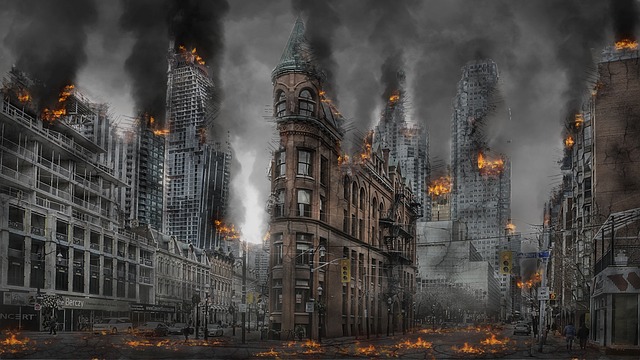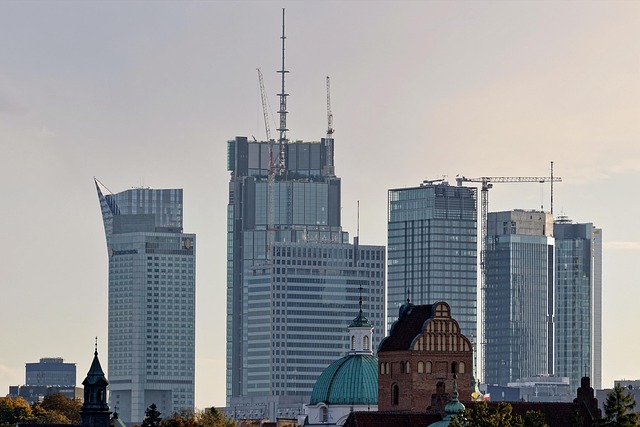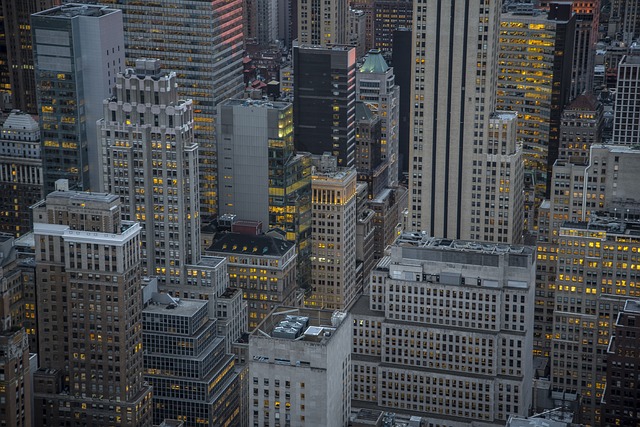Karachi's construction bylaws are critical for safe, aesthetically pleasing urban development. These laws, focusing on zoning, height limits, and structural integrity, promote harmonious growth. Gadap Town serves as a model for effective planning, balancing residential, commercial, and recreational spaces. Karachi's regulatory framework ensures building safety, with strict rules for fire exits, lighting, and load-bearing capacities. The city's bylaws shape Gadap Town's physical and social fabric, enhancing livability and cultural preservation. With a focus on sustainability and smart city initiatives, Karachi attracts green investments and embraces modern architecture.
“Karachi, as Pakistan’s bustling metropolis, has witnessed rapid urban growth but also faces challenges with construction quality and safety. This article explores the intricacies of construction bylaws in Gadap Town, a model for sustainable development. We delve into how stringent regulations ensure safe buildings, positively impact local communities, and shape Karachi’s future urban landscape. Understanding these bylaws is crucial for navigating the city’s dynamic architecture while upholding safety standards.”
- Understanding Construction Bylaws in Karachi
- Gadap Town: A Model for Urban Development
- Regulatory Framework for Safe Buildings
- Impact of Bylaws on Local Community
- Future of Construction Regulations in Karachi
Understanding Construction Bylaws in Karachi

In the bustling metropolis of Karachi, understanding construction bylaws is paramount for any individual or entity involved in the building sector. These laws are designed to ensure safety, maintain aesthetics, and regulate urban development across the city. Karachi, known for its vibrant landscape and rapid growth, has specific construction guidelines that cater to its unique challenges and opportunities.
The construction bylaws of Karachi cover a wide range of aspects, including zoning regulations, building height restrictions, permitted uses, and structural safety standards. Compliance with these rules is crucial to avoid legal issues and ensure projects contribute positively to the city’s tapestry. By adhering to the guidelines, developers, architects, and builders can navigate the complex urban environment, fostering sustainable growth and enhancing the overall quality of life for Karachi’s folks.
Gadap Town: A Model for Urban Development

Gadap Town, a vibrant and bustling area in Karachi, has emerged as a model for urban development within Pakistan. Its strategic location, coupled with well-planned infrastructure and a thriving community, makes it a prime example of successful urban planning. The town’s construction bylaws are meticulously designed to ensure sustainable growth while preserving the area’s unique character. These regulations prioritize balanced development, promoting harmony between residential, commercial, and recreational spaces.
By adopting innovative strategies, Gadap Town has navigated the challenges often associated with rapid urbanization. The bylaws emphasize green initiatives, incorporating ample open spaces and parks that enhance the quality of life for residents. Moreover, the town’s architectural diversity, ranging from modern high-rises to traditional residential areas, showcases a harmonious blend of aesthetics and functionality, setting a benchmark for future urban development projects in Karachi and beyond.
Regulatory Framework for Safe Buildings

In Karachi, the regulatory framework for safe buildings is a multifaceted structure designed to ensure structural integrity and protect residents’ lives. The city’s construction bylaws are stringent, reflecting the need for robust building standards given the metropolis’s dense population and dynamic urban landscape. These regulations cover various aspects, from zoning and site planning to specific safety measures like fire exits, emergency lighting, and load-bearing capacities.
The framework is enforced by local authorities who conduct regular inspections and issue permits for construction projects. Compliance with these bylaws is crucial not only for developers and builders but also for ensuring the safety of future occupants. Karachi’s regulatory approach aims to balance urban development with the well-being of its folks, fostering a vibrant and secure environment in spite of the city’s bustling nature.
Impact of Bylaws on Local Community

In Gadap Town, like many other urban areas in Karachi, construction bylaws play a pivotal role in shaping the physical and social landscape. These regulations aren’t merely technical guidelines; they are tools that directly influence the quality of life for local residents. By dictating building heights, densities, and zoning use, bylaws can either foster a vibrant, sustainable community or lead to overcrowding and urban sprawl. For instance, strict height restrictions near residential areas help maintain peace and quiet for neighbors, preventing the emergence of bustling commercial hubs that could disrupt peaceful living.
Moreover, these bylaws contribute to Karachi’s overall urban planning efforts. They ensure that construction projects align with the city’s vision for development—a balanced mix of commercial, industrial, and residential zones. When correctly implemented, these regulations can enhance the aesthetic appeal of neighborhoods, attract investment, and preserve the cultural heritage of the area. In essence, construction bylaws are not just rules on paper; they have a tangible impact on the livability and sustainability of Gadap Town and other parts of Karachi.
Future of Construction Regulations in Karachi

Karachi, as one of Pakistan’s most populous and rapidly growing cities, is witnessing a significant evolution in its construction bylaws and regulations. The future of construction in Karachi looks promising with an emphasis on sustainable practices and smart city initiatives. The authorities are focusing on implementing stricter environmental standards to ensure that new developments are eco-friendly and energy-efficient. This shift towards green building practices will not only benefit the environment but also attract investors interested in modern, sustainable infrastructure.
With the city’s ever-expanding skyline, there is a growing need for innovative design and efficient use of space. Karachi’s construction regulations are adapting to accommodate mixed-use developments, smart infrastructure, and modern architectural concepts. These changes aim to create a balanced urban environment while catering to the needs of a bustling metropolis. In terms of digital transformation, the city is embracing technology to streamline building permits, zoning approvals, and other administrative processes, making it easier for developers and residents alike.
The construction bylaws in Gadap Town, Karachi, offer a comprehensive framework for urban development. By understanding and adhering to these regulations, the city can ensure safe buildings and positively impact its local community. This model provides valuable insights into effective governance, demonstrating that thoughtful planning and implementation are key to shaping a prosperous and sustainable future for Karachi’s ever-evolving landscape.



